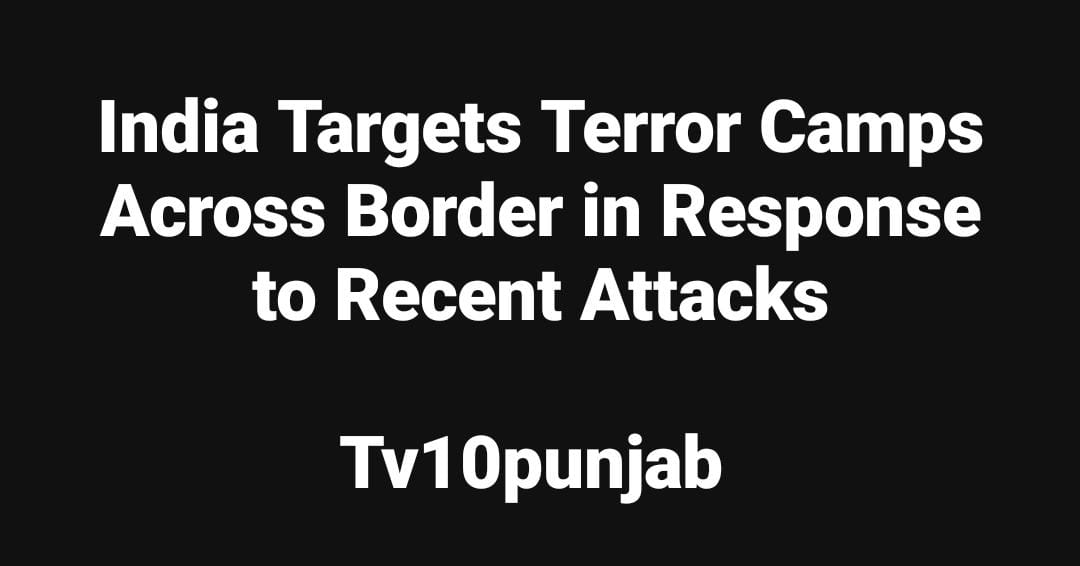National Desk
8 May
Sandeep Dhand
Journalist and Research Analysist
In a bold and calculated response to the recent terror attack in Pahalgam, where 26 tourists were killed, India carried out precise airstrikes under “Operation Sindoor” targeting nine terrorist camps in Pakistan and Pakistan-occupied Kashmir (PoK). These camps were believed to be used for planning and training terrorists to launch attacks in India.
Targeted Terror Camps

According to reliable sources, one of the main targets was the headquarters of Jaish-e-Mohammed (JeM) located in Bahawalpur, about 100 kilometers from the international border. This location was considered a deep symbolic target as it was allegedly a major hub for large-scale terror planning against India.
Another important target was a Lashkar-e-Taiba (LeT) training camp in Muridke, located just 30 kilometers from the border across from Samba in Jammu. This camp was infamous for training terrorists involved in past attacks, including the 26/11 Mumbai attacks. It represented a constant threat due to the cross-border support for terrorism.
Attacks Near Line of Control
Several airstrikes were conducted near the Line of Control (LoC), especially in the Poonch-Rajouri sector. One major camp hit was the Gulpur training facility, which had reportedly been used for launching attacks, including a deadly incident in April 2023 and an assault on a bus carrying pilgrims in June 2024.
The Kotli camp, another major LeT facility located opposite Rajouri, was also targeted. This camp allegedly housed around 50 operatives at a time and was used for training suicide bombers.
The Barnala camp, located just 10 kilometers from the LoC, was destroyed. It served as a logistical and organizational center for militants infiltrating into Jammu and Rajouri regions.
Additional Strategic Strikes
India also struck the Sarjal camp near the international border, about 8 kilometers from the Samba-Kathua sector. This was another JeM site and was used for launching terrorists into Indian territory.
A significant strike was also conducted on the Mehmuna camp near Sialkot, only 15 kilometers from the border. This facility was a training center operated by Hizbul Mujahideen, and its destruction dealt a blow to the group’s capabilities in the region.
Key Camps Linked to Previous Attacks
The Tangdhar sector in PoK, known to host the LeT-operated Swai camp, was also targeted. Intelligence reports had connected this camp to multiple terror incidents, including those in Sonmarg (October 20, 2024), Gulmarg (October 24), and most recently, the attack in Pahalgam on April 22, 2025.
Another JeM facility, the Bilal camp, was hit during the operation. This launchpad was considered one of the final stopovers for terrorists before attempting infiltration into Indian territory. It served as a crucial last-stage transit point for launching terror strikes inside India.
Message Through Precision
The airstrikes were described as accurate and focused, minimizing collateral damage while delivering a strong message. These actions highlighted a clear strategy of targeting only verified terror camps and infrastructure with precision. The operation was seen as a strategic move to disrupt the planning, training, and launching of cross-border terrorist activities.
Deterrence Through Strength
By carrying out this mission, India aimed to not only avenge the lives lost in recent attacks but also deter future acts of terrorism. The selection of camps—most of them closely linked to past incidents of violence—underscored a firm stance against safe havens used for cross-border terrorism.
The strikes under Operation Sindoor reinforced India’s commitment to protecting its citizens and eliminating threats before they reach Indian soil. It sent a strong signal that any provocation would be met with firm and proportionate military action.
This development marked a shift in strategy, where proactive targeting of terror infrastructure is prioritized over reactive defense, showing that India will not tolerate repeated attacks on innocent civilians.